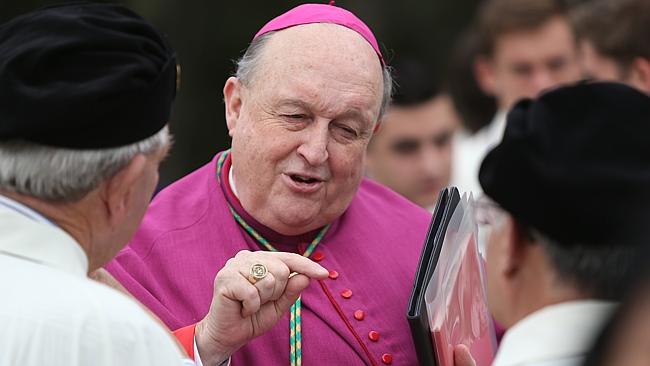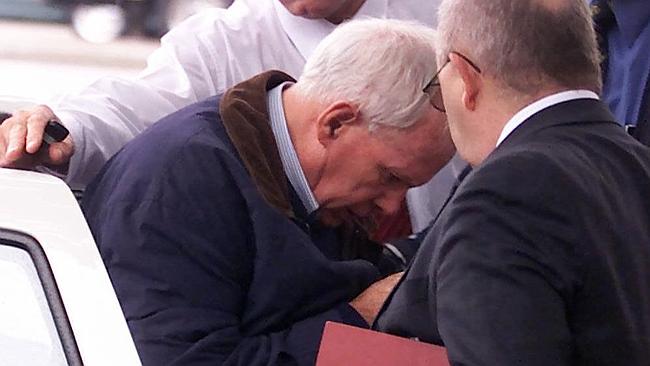What Archbishop Philip Wilson Knew about Paedophile Priest James Fletcher in 1976 Will Be Tested in Court Next Month
By Michael Mcguire
DANIEL Feenan was born in 1976. The same year a newly ordained priest by the name of Philip Wilson was living in Maitland, in country NSW, with another priest called James Fletcher. Fletcher was a paedophile. Through the 1970s Fletcher was a serial preyer on young, defenceless boys and was left to run unchecked by the Catholic Church. By 1989, when Feenan was 12, Fletcher was still on the prowl and the young boy was to become just another in a long line of the priest’s victims. The question is: Why wasn’t Fletcher stopped? Did the Catholic Church turn a blind eye to the monster in its midst or was it just oblivious? What that young priest, now Archbishop Wilson, knew about Fletcher’s behaviour in 1976 will be tested in court next month.
Wilson has been charged with a single count of allegedly concealing a serious offence regarding child sexual abuse and will appear in Newcastle Local Court on April 30. In a statement this week, Wilson said he “completely denied the allegation” and would “vigorously defend his innocence”. In many interviews Wilson has always denied he knew anything about the paedophile behaviour of priests whom he knew. “The thing is I was 25 in 1975 when I was ordained as a priest,” he said in 2010. “I didn’t know there were such people as paedophiles. In my life, I had never seen anything to raise suspicion this was happening.” Wilson and Fletcher would go their separate ways after 1976. Wilson would begin his climb through the church’s hierarchy, which would culminate in him becoming the Archbishop of Adelaide in 2001. and By 2010 he was being freely tipped to be appointed archbishop of Sydney. Fletcher was never charged with any offending relating to his behaviour in 1976. but However, the case of Daniel Feenan many years later, in all its horrific detail, exposed the depravity and methodology of a priest who ruined many young boys. In 2004, Fletcher was convicted of eight counts of having homosexual intercourse with a child aged between 10 and 18 and one count of committing an act of indecency with the same boy when he was 13. The eight charges related to anal and oral sex and were committed between 1989 and 1991. He Fletcher was sentenced to 10 years in prison, but he died would die in jail in 2006 after suffering a stroke. In what could be the ultimate symbol of all that was wrong with the Catholic Church’s ignorance about how to handle the sexual abuse perpetrated by its priests, 400 people attended Fletcher’s funeral at St Brigid’s Church in Branxton, where he had been appointed parish priest in 1995. He was buried in the priest’s section of the Sandgate cemetery near Newcastle. and He was given a marble headstone that still referred to him as a “Rev Father” and listed his career achievements. Needless to say, there was no reference to Fletcher being a convicted paedophile. Fletcher appealed against his original conviction in 2005, but in rejecting it his appeal the NSW Court of Criminal Appeal’s Justice Carolyn Simpson outlined Fletcher’s pattern of behaviour. “This included befriending local Catholic families, particularly those with young sons, and involving himself in the lives of the families,” Justice Simpson wrote. “In some cases favouritism was directed to one family member, a young male. “There was a good deal of evidence of sexually explicit, and what may by many be thought to be inappropriate conversations with the young men. “This included questioning them about their sexual activity (or lack of it), telling risque jokes, showing a pornographic video, involving the boys in sexually overt conduct falling short of intercourse, and possession of pornographic magazines.” Justice Simpson also outlined the threats and intimidation used by Fletcher to ensure his victim remained silent. “…the appellant (Fletcher) repeatedly told him not to reveal their activities to anybody else, saying that what had happened was ‘our secret’, that, if the complainant (Feenan) did reveal their activities, he would not be believed because the appellant was a priest, that what they were doing was normal, and that the appellant threatened, if the complainant refused to co-operate, to involve his younger brothers in the same kind of activity.” Bizarrely, even after he died in shame in prison, friends of Fletcher tried to have his name cleared, appealing to the High Court, where it the appeal was again kicked out. All the while that Fletcher was wreaking his trail of devastation, the career of his former housemate, Philip Wilson, continued to thrive. At age 16 Wilson had decided the church was his calling. Wilson, born in the hard-scrabble NSW mining town of Cessnock in 1950, Wilson was the oldest of five children born to Joan and John Wilson. He attended the local St Patrick’s Primary before moving to St Joseph’s College in Hunter’s Hill, one of Sydney’s most elite schools. He completed his studies for the priesthood at St Patrick’s Seminary in Manly before being ordained and assigned to St Joseph’s parish in Maitland, about 30km from his old home of Cessnock. It was around this time he would encounter Fletcher. Wilson moved to New York to study in 1977-78 before returning to the Maitland diocese as head of religious studies. At the time the Maitland diocese was in the grip of an unacknowledged crisis of paedophile priests. In the orbit of Wilson’s orbit, there was not only Fletcher but also a Newcastle priest called John Denham, both of whom taught with both teaching for a time at St Pius X school in Adamstown. Denham was later sentenced to 18 years in prison jail for crimes against 57 boys between the ages of five and 17 over 18 years. and he is not eligible for parole until 2028. Then there was Dennis McAlinden. In 1985, Wilson was sent to investigate claims that McAlinden had abused a young girl in Merriwa, NSW. Many years later Wilson claimed to have told the school’s principal, Mike Stanwell, to report his suspicions to police. Stanwell denies that claim. Wilson also said he told his bishop, Leo Clarke, of his suspicions. McAlinden was subsequently transferred to another parish, and was then shifted around Western Australia, Papua New Guinea and New Zealand before being defrocked after an inquiry in 1995. For most of the early 1990s, Wilson lived in Washington DC studying canon law, the rules and regulations that govern the Catholic Church. But he was a rising star and in 1996 was appointed Bishop of Wollongong, becoming the youngest clergyman in Australia to hold the office. Wollongong was another diocese in crisis. Before Wilson arrived, one priest had been jailed while and a suspected paedophile had killed himself. In his first six months he had to deal with another 42 complaints. Wilson, though, adopted an effective methodology. He contacted police, he supported and apologised to victims, he ended the culture of secrecy and won much respect for his approach. In 2001 he was promoted again, becoming the surprise choice as Adelaide’s new archbishop. Again he won praise for helping expose paedophiles. He kickstarted the process which that would eventually result in the conviction of bus driver Brian Perkins, who had sexually abused students at St Ann’s special school. He drove the Towards Healing program, which laid down the protocols on how to manage allegations of abuse and implemented strategies to stop any repeats. Wilson’s influence spread across Australia and in 2006 he was elected president of the Australian Catholic Bishops Conference. By 2010 he was considered a likely successor to Cardinal George Pell as archbishop of Sydney. But that was when the ghosts ?of ?the ?past ?started ?to re-emerge.
|
.
Any original material on these pages is copyright © BishopAccountability.org 2004. Reproduce freely with attribution.

